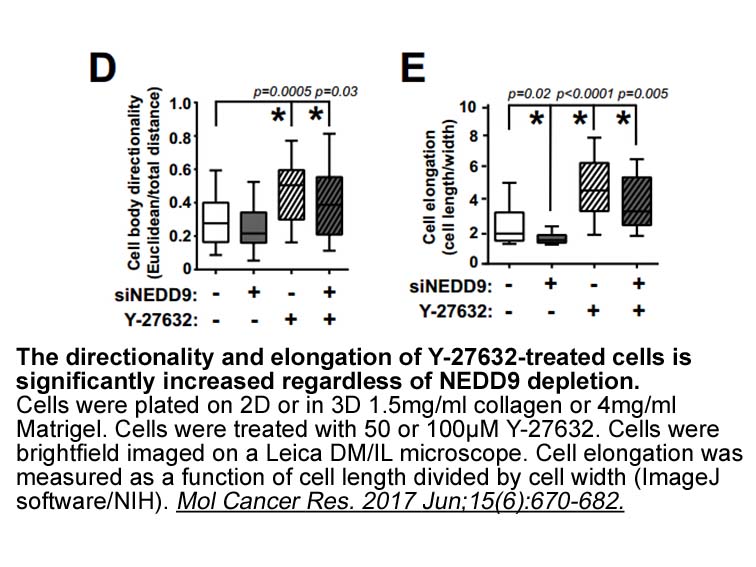Archives
Some of the mechanisms that
Some of the mechanisms that involve 12-LOX as a potential pathogenic enzyme are illustrated in Fig. 2. Direct β cell effects associated with the stimulation of 12-LOX activity include the activation of second messengers c-Jun N-terminal kinase and p38 MAPK, both of which show increased phosphorylation in response to 12-LOX activation [31], [44], [45]. Transient knockdown of 12/15-LOX expression in mice by in vivo siRNA resulted in reduced p38 MAPK activity and resistance to pro-inflammatory cytokine-induction [30]. Additionally, 12HETE may contribute to mitochondrial and oxidative stress, conditions to which β Ramipril are highly sensitive, by increasing mitochondrial nitric oxide and intramitochondrial calcium [46]. Mitochondrial dysfunction reduces the ATP/ADP ratio, and thereby directly affects insulin secretion from the islet.
Other pathways, including ER stress, are current areas of investigation. Interestingly, 5-LOX has recently been shown to improve islet function in rodents [47]. The role of 5-LOX has not been extensively investigated to date, and there have been conflicting reports regarding the expression of 5-LOX in rodent islets. However, data from our lab (unpublished) indicates clear levels of ALOX 5 expression in human islets. Thus, unlike 12-LOX, the role of 5-LOX is not clear but could serve a beneficial role in preserving islet function in humans. This area is worthy of follow up investigation.
The activity of 12-LOX in the pancreatic islet is multifaceted. AA stimulates insulin secretion from pancreatic β cells, which is inhibited by 12-LOX activity, likely due to reduction in available AA via substrate metabolism by 12-LOX [48]. This may be further compounded by 12-LOX induction of COX-2, which converts AA to PGE2[49]. Additionally, 12-LOX activity may trigger the activation of Toll-like receptor 4 (TLR4) in resident dendritic cells in islets, and thereby promote a pro-inflammatory/autoimmune environment through the upregulation of IL-12 [50], [51]. Cytokine-induction of 12-LOX activity and its lipid mediators in the β cell results in cell dysfunction mediated by second messenger activation. Targeting selective inhibitors of 12-LOX activity is a promising pharmacological strategy for th e treatment of diabetes and has been validated in proof-of-concept studies using islet-specific 12/15-LOX knockout mice. It is important to note that the source of rodent 12/15-LOX expression in the islet is not completely clear. While β cells express the enzyme, resident macrophages or dendritic cells may play an important role in 12/15-LOX expression and activity or downstream effects on IL-12.
The predominant LOX enzyme identified in the non-diabetic human islet is the platelet-derived 12-LOX isoform (ALOX12), while leukocyte 12-LOX has been identified in rodent islets [37]. A dominant lipid product of 12-LOX activity, 12HETE, has been identified in rat and human islets, and in rodent β cell lines [30], [31], [43], [45], [50], [52], [53], [54], [55], [56]. The contribution of other LOX enzymes in the pancreatic islet is less clear. Turk and Shannon were unable to detect 5-LOX protein or enzymatic activity in rat islets [54], [55]. In contrast, mRNA for 5-LOX but not for LOX 15-1 has been reported in normal human islets [50]. Considering the four predominant endocrine cell types that are present in the islet (α, β, δ, and F cells), the insulin-producing β cell is reported to be the preferential site for 12-LOX expression [11], [31], [55]. However, immunohistochemical analysis of 12-LOX expression co-localized 12-LOX with glucagon-expressing α cells in the rat islet [56]. Kawajiri et al. reported that over-expression of 12-LOX in an α cell line doubled glucagon secretion.
It would be of interest to clarify the LOX isoforms expressed in islets from subjects with type 1 or type 2 diabetes mellitus. Studies evaluating the forms of LOX in islets from subjects with diabetes are ongoing. The results from these studies will be important in determining the therapeutic potential of targeting certain enzymes in the treatment of human diabetes. Table 2 summarizes the current evidence linking 12-LOX with pancreatic β cell function and diabetes.
e treatment of diabetes and has been validated in proof-of-concept studies using islet-specific 12/15-LOX knockout mice. It is important to note that the source of rodent 12/15-LOX expression in the islet is not completely clear. While β cells express the enzyme, resident macrophages or dendritic cells may play an important role in 12/15-LOX expression and activity or downstream effects on IL-12.
The predominant LOX enzyme identified in the non-diabetic human islet is the platelet-derived 12-LOX isoform (ALOX12), while leukocyte 12-LOX has been identified in rodent islets [37]. A dominant lipid product of 12-LOX activity, 12HETE, has been identified in rat and human islets, and in rodent β cell lines [30], [31], [43], [45], [50], [52], [53], [54], [55], [56]. The contribution of other LOX enzymes in the pancreatic islet is less clear. Turk and Shannon were unable to detect 5-LOX protein or enzymatic activity in rat islets [54], [55]. In contrast, mRNA for 5-LOX but not for LOX 15-1 has been reported in normal human islets [50]. Considering the four predominant endocrine cell types that are present in the islet (α, β, δ, and F cells), the insulin-producing β cell is reported to be the preferential site for 12-LOX expression [11], [31], [55]. However, immunohistochemical analysis of 12-LOX expression co-localized 12-LOX with glucagon-expressing α cells in the rat islet [56]. Kawajiri et al. reported that over-expression of 12-LOX in an α cell line doubled glucagon secretion.
It would be of interest to clarify the LOX isoforms expressed in islets from subjects with type 1 or type 2 diabetes mellitus. Studies evaluating the forms of LOX in islets from subjects with diabetes are ongoing. The results from these studies will be important in determining the therapeutic potential of targeting certain enzymes in the treatment of human diabetes. Table 2 summarizes the current evidence linking 12-LOX with pancreatic β cell function and diabetes.